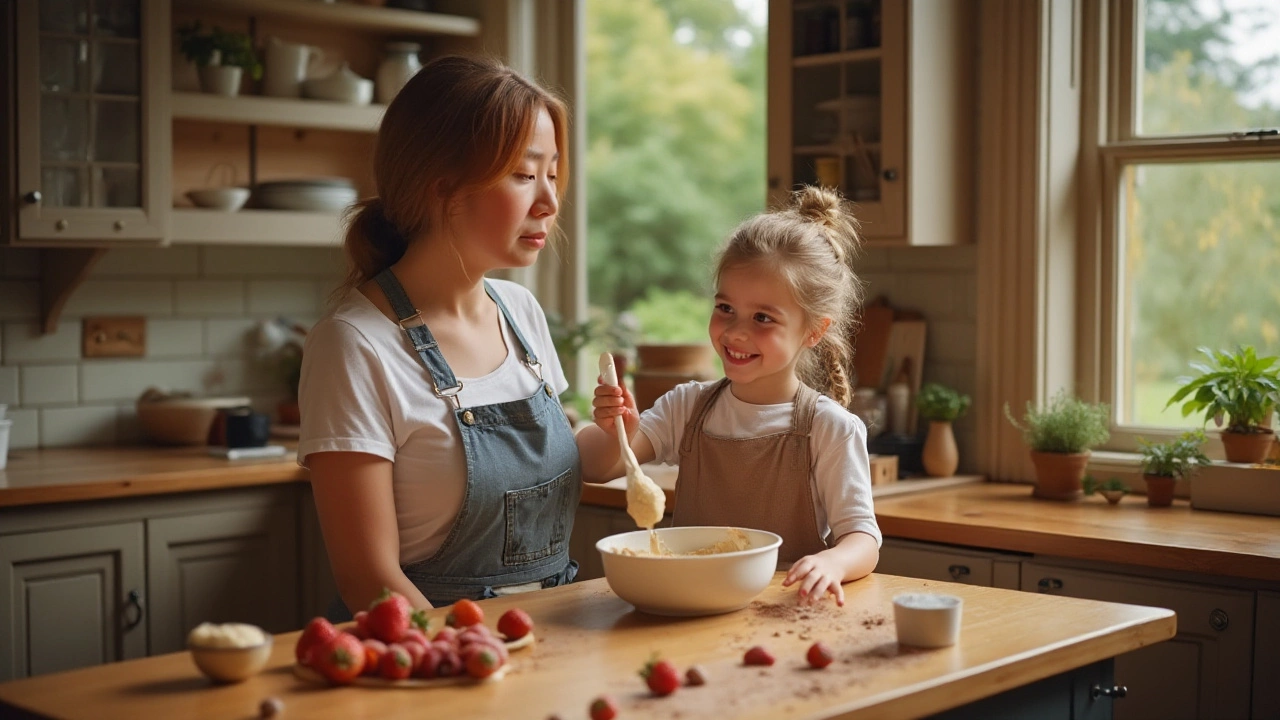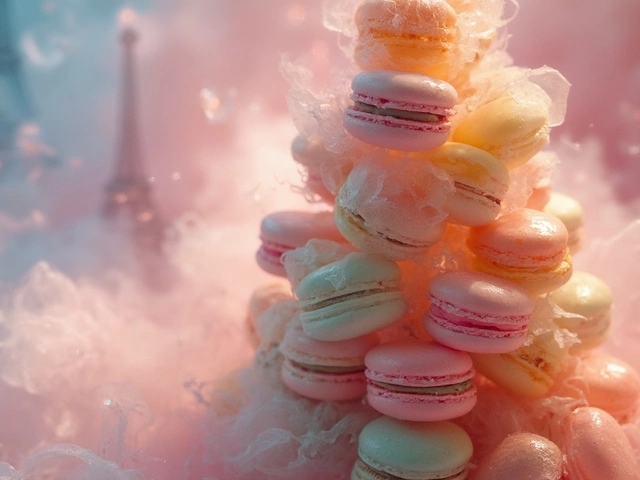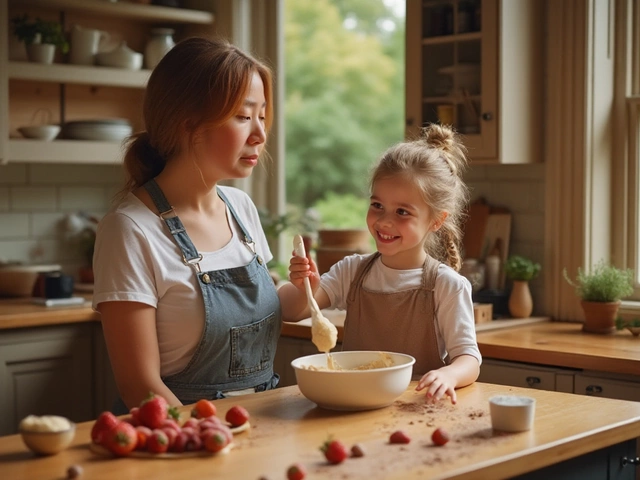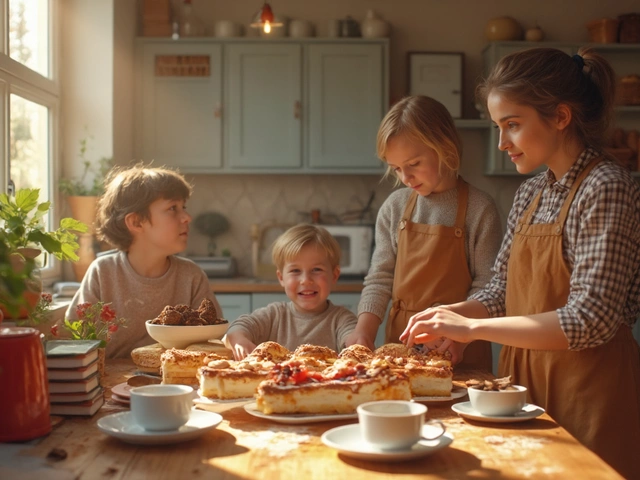The way to someone’s heart is often through dessert, and cakes, with their infinite flavors and forms, hold a special place in the lives of many girls. But which flavors top the list? Whether for a birthday, a celebration, or simply a day of indulgence, the story of cakes is as diverse as those savor them.
Explore the ever-loved vanilla, cherished for its simplicity yet rich flavor. Delve into the world of chocolate cake, an all-time favorite with its decadent vibe. For those who prefer a touch of freshness, berry-infused cakes offer a perfect blend of sweet and tart. Discover the classic red velvet, celebrated for its unique texture and flavor.
Every cake tells a story, and decorating them can be an art. Learn some handy tips to elevate your cake presentation skills and make every bite as enticing as it looks.
- Introduction to Favorite Cake Flavors
- The Classic Charm of Vanilla Cake
- Rich and Decadent Chocolate Cake
- Fruity Freshness: Berry Cakes
- The Allure of Red Velvet
- Creative Cake Decorating Tips
Introduction to Favorite Cake Flavors
When it comes to the subject of cake, people's eyes light up with sweet memories and unparalleled joy. But why do certain cake flavors always seem to stand out, especially among young girls? The choice of popular flavors is influenced by many factors, ranging from cultural preferences to childhood nostalgia. It's fascinating to see which cakes consistently land on the favorite list. Vanilla, despite its seemingly simple profile, often emerges as a top contender. Many associate its delicate flavor with the innocence of childhood, birthday parties, and celebrations.
A study conducted by the American Bakers Association revealed that 35% of respondents favored vanilla cake over any other type, highlighting its universal appeal. This statistic underscores not just a preference, but a cultural affinity for a flavor that settles comfortably with many palettes. On the other side of the spectrum is chocolate cake, indulgent and rich, pushing the boundaries of dessert in both taste and texture. Its popularity is evident in the thrill it brings, often making appearances at both casual gatherings and grand festivities.
Psychologists have sometimes linked the popularity of certain cake flavors to mood appeals and sensory satisfaction. The fluffy texture and inviting aroma have a comforting effect. As Marie Antoinette famously, albeit apocryphally, quipped, we think of cake as a treat that defies reason and logic. In today's modern kitchens, this sentiment remains true, as aspiring bakers experiment with taste profiles to capture both traditional favorites like the chocolate and vanilla
"A party without cake is just a meeting." - Julia Child
Girls often have scientific views of dessert ideas, fueled by taste-centric media and social celebrations. Cake remains a sweet emblem of celebration and fond memory, while still providing a platform for new creative culinary explorations. In environments where food trends evolve at an unprecedented pace, the enduring popularity of cakes is a testament to their adaptability and appeal.
The Classic Charm of Vanilla Cake
Few cakes possess the universal appeal and enduring elegance of the beloved vanilla cake. Vanilla, with its warm, inviting aroma, is not just a flavor but an experience that wraps you in comfort. This timeless classic often evokes nostalgia, being the centerpiece at many birthday parties and family gatherings. The fascinating part about vanilla cake is its sheer versatility. While it stands strong on its own, its subtle flavor forms the perfect base for countless modifications, making it a notorious crowd-pleaser across all occasions. Vanilla, as a flavor, enjoys a significant standing in the world of baking. Did you know that vanilla is a spice derived from orchids of the genus Vanilla, primarily from the Mexican species, flat-leaved vanilla? Imagine the journey of these orchids, meticulously pollinated by hand, to bring pure delight to your taste buds. A fascinating aspect is that vanilla was considered the food of the gods by ancient civilizations, signifying its precious value.
"Vanilla is a foundation ingredient, and its versatility in combining with other flavors makes it an essential pantry staple," notes celebrated pastry chef Dominique Ansel.
The art of baking a perfect vanilla cake lies in its simplicity. However, mastering it requires precision. The balance between ingredients like sugar, butter, eggs, flour, and vanilla extract is crucial for a light and fluffy texture. A common secret shared among bakers is to use room temperature ingredients, which ensures a smoother batter and even baking. It's also exciting to experiment with different types of frosting. A classic pairing like rich buttercream or a tangy cream cheese frosting can elevate the flavor profile while keeping the cake quintessentially vanilla.
But beyond the ingredients lists, it's about the heartfelt practice of baking – sifting the flour just right, creaming the butter until your arm tires, and attentively peeking into the oven to watch it rise. Elevating your vanilla cake can be as simple as adding a handful of fresh berries into the batter or introducing some unexpected spices like cardamom. According to a survey by the International Baking Association, vanilla cake remains a favorite for over 40% of households, showcasing its ubiquity in diverse culinary traditions.
For those interested in decorating tips, consider garnishing with a dusting of powdered sugar, fresh fruit, or edible flowers to give your cake a picturesque, artisanal appearance. Remember the words of culinary legend Julia Child, "A party without cake is just a meeting." Vanilla cake, with its understated elegance and infinite adaptability, transforms any gathering into a celebration, anchoring us in moments of shared joy and sweet indulgence.
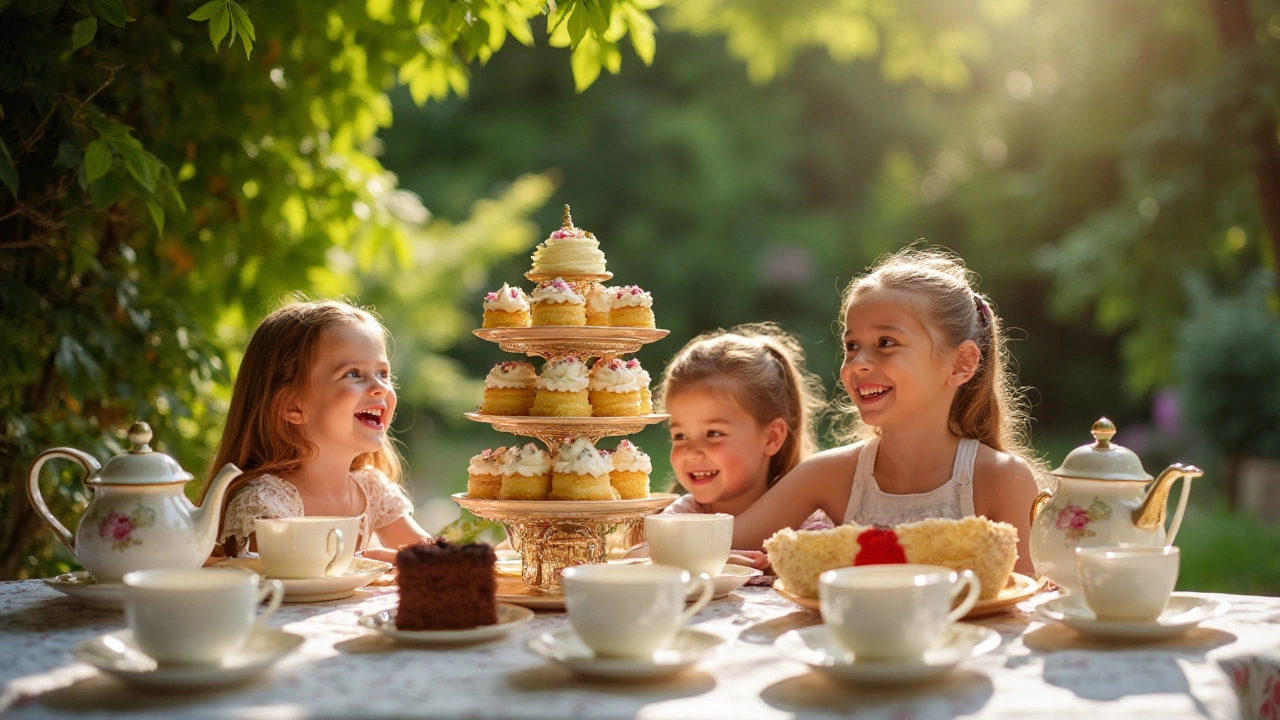
Rich and Decadent Chocolate Cake
When it comes to indulgence, few things compare to the luxurious taste of a chocolate cake. This beloved dessert, a staple at countless celebrations and cozy nights in, owes its allure to its rich, deep flavors and velvety texture. Chocolate, derived from the cacao bean, was prized even by ancient civilizations such as the Aztecs and Mayans, known for drinking it as a bitter liquid. Today, it reigns as a supreme choice for cakes, its diversity of preparation and flavor profiles making it a universal favorite. It’s not just about sweetness; the balance between the intense cocoa and the perfect level of sugar is what creates that unforgettable taste blend.
Create your own chocolate masterpiece by starting with the right ingredients. Quality is key: opting for high-grade cocoa powder or finely chopped dark chocolate will make all the difference in your cake's depth of flavor. A good chocolate cake recipe marries these with the perfect combination of flour, sugar, eggs, and butter. The process often involves first creaming the butter and sugar, before introducing the eggs, and then carefully folding in the dry ingredients. This gives it the often cited 'melt-in-your-mouth' quality. According to renowned chocolatier Jacques Torres, the perfect chocolate cake is about texture as much as taste: "A perfect chocolate cake demands balance; the cake should be moist yet robust enough to hold the plush acidity of a good quality chocolate."
For those looking to add a bit of sophistication, consider infusing your chocolate cake with espresso or even substituting some liquid with strong brewed coffee to heighten the cocoa flavors. For a more adventurous palate, mix in some spices such as cayenne or cinnamon for a surprising twist. Decorating a chocolate cake is a canvas of creativity; a simple ganache can cover its exterior in a glossy embrace, but some choose to go further, perhaps adding chocolate shavings or delicate edible flowers. Presentation counts for much, enhancing the experiences for both the eyes and the taste buds.
Did you know that a famous chocolate cake from the 19th century, called the Devil's Food Cake, was named such due to its contrary nature to the lighter and 'angelic' Angel Food Cake? Such historical anecdotes remind us of how popular flavors in desserts have long been tied to cultural narratives. Even today, chocolate cakes are often on the menu in prestigious events. They symbolize a treat one can rely on to satisfy, with the underlying comfort of tradition meeting gourmet creativity. The numbers speak for themselves; surveys show that over 70% of individuals list chocolate cake among their top three favorite desserts.
For the home baker, with modern resources like online video tutorials and ingredient delivery services, recreating a chocolate cake that stands tall and impressive is now easier than ever. Remember to adjust baking times based on your oven’s peculiarities, as temperature consistency is crucial for achieving that desirable dense crumb. Whether you’re aiming for a rustic-looking cake, oozing with melted chocolate, or an elegant three-tiered showpiece, it’s the devotion and passion you stir into your batter that makes the final result truly your own.
Fruity Freshness: Berry Cakes
Baking a berry cake is akin to capturing a slice of summer, regardless of the season. With their vibrant colors and refreshing taste, berry cakes offer a delightful twist to traditional cake recipes. Imagine blending the tangy burst of raspberries, the sweetness of strawberries, and the subtle tartness of blueberries into a moist, fluffy cake. This combination is a look and taste that is hard to resist, making berry cakes a favorite among many, especially young girls who delight in both its appearance and taste. An interesting known fact is that strawberries and blueberries are some of the most antioxidant-rich fruits available, providing a healthful bonus to these treats, or as I like to call them – guilt-free indulgences, that are often sought after during festive occasions. Besides their amazing flavors, berries are known for their health benefits and have even been called 'nature's candy' as they bring sweetness without the processed sugars.
The appeal of berry cakes doesn't stop at their healthfulness or vibrant hues. The ease of obtaining fresh, frozen, or even dried berries makes these cakes accessible for all seasons. Beyond their innate flavors, berries can be infused with additional ingredients to enhance their essence. A touch of vanilla or a sprinkle of lemon zest can elevate the flavors, transforming a simple berry cake into an elegant dessert centerpiece. For the daring baker, adding a layer of homemade berry jam or fresh cream can make the cake irresistible. According to Chef Marla Aldis, a renowned pastry chef, "Incorporating layers of flavor with a mix of fresh and sweetened berries can transform a basic cake into a tantalizing experience."
Creating berry cakes can be as simple or elaborate as you'd like, depending on the occasion and your level of creativity. If you're feeling adventurous, you could even attempt a berry mousse layer, capturing the essence of mixed berries in a smooth, creamy layer contained within a soft sponge cake. Such cakes not only taste divine but also present beautifully when sliced, showcasing vibrant layers against contrasting buttery whites. Generally, these cakes are more than just their taste; they are an opportunity for expression and creativity. Arranging berries artistically on top can provide a stunning visual feast, enhancing the experience and making them perfect for celebrations, like birthdays or tea parties. The appeal extends beyond taste—it’s the joy of creating something visually spectacular that also happens to be delicious.
To wrap up a successful berry cake experience, consider some essential baking tips. Firstly, choose fresh, high-quality berries whenever possible, as mushy or overly tart berries can change the cake’s expected outcome. Secondly, don't hesitate to balance flavors with a sprinkle of sugar or a dribble of honey to bring out the natural sweetness of the berries as needed. Lastly, keeping an eye on the moisture content is critical; too much berry juice might result in a soggy cake. To mitigate this, it might help to lightly toss your berries in flour before adding them to the batter—this helps absorb excess moisture while preserving their natural juiciness. Embrace the creativity and variety that berry cakes offer, and let the vibrant berry colors paint a smile on the faces of those who enjoy your delectable dessert.
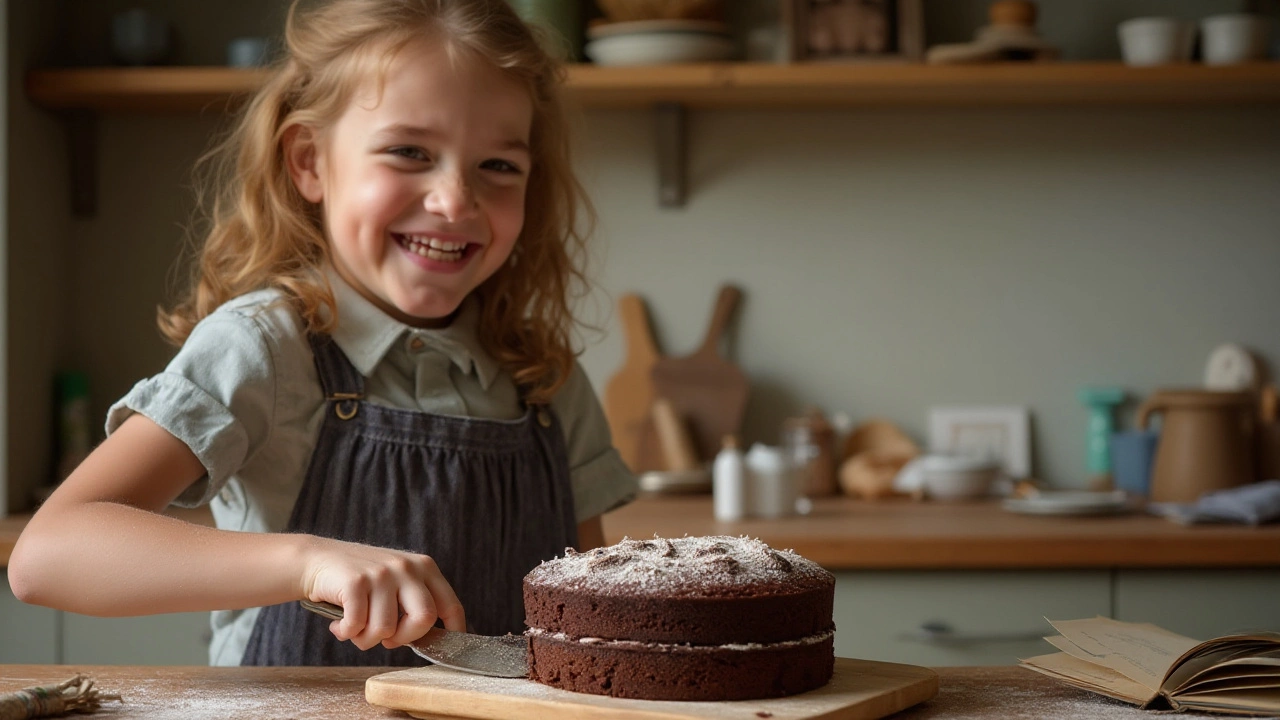
The Allure of Red Velvet
Red Velvet Cake has a mystique all its own, a distinctive pulling power that makes it a staple at parties and celebrations. Its striking appearance, with the lush red hue contrasted by creamy white frosting, is often the centerpiece of dessert tables. While it masquerades as a chocolate cake due to its cocoa-infused batter, what sets it apart is its unique combination of flavors and textures. A well-made red velvet cake is tender, moist, and slightly tangy, a result of buttermilk and vinegar in its mix. This dance of flavors, nestled under a smooth cream cheese frosting, creates a taste that's both rich and refreshing, a paradox that delights the palate.
The history of red velvet cake is as intriguing as its taste. The cake is believed to date back to the Victorian era, when cooks started adding cocoa to soften the flour's proteins. During the Great Depression, John A. Adams of the Adams Extract Company popularized the cake in America by including red food coloring in his company's products to boost sales. It captured the hearts and taste buds of many, and by the 1950s, it became a staple in Southern cuisine, celebrated unceasingly by bakeries and home cooks. The resurgence in its popularity today could be seen in its frequent appearances on dessert menus and its adaptation into cupcakes, whoopie pies, and even pancakes.
What Makes Red Velvet Irresistible?
Beyond its enticing flavor and vibrant color, red velvet cake carries with it a sense of nostalgia and distinct identity. There's a heartfelt quality to it; those who make it often have a special recipe that's been passed down through generations, each iteration lovingly refined through the years. The precise balance of flavors, a hint of cocoa with lightly acidic notes, invites even those wary of overly sweet desserts to indulge. It's a cake that unites, enticing both young and old, and stands proudly during significant life events, from weddings to holidays.
"Red velvet cake is more than just a dessert. It's an expression of love, a celebration in every bite," said a renowned pastry chef in an interview.
Crafting the perfect red velvet cake requires patience and attention to detail. The batter must be flawlessly smooth, achieving the right shade of red with just enough colorant—not too vivid, not too dull. Mixing the components at the correct temperature is crucial, ensuring the cake rises without sinking in the middle. Many bakers swear by their preferred brands of cocoa and buttermilk to create the ideal texture and flavor. While some stick to tradition, others love experimenting with new twists, perhaps adding a hint of citrus zest or a splash of vanilla bean extract.
Of course, the icing on the cake, quite literally, is the classic cream cheese frosting. Its tangy, slightly sour touch is the perfect complement to the cake's gentle sweetness. Some bakers add a dash of heavy cream or a teaspoon of vanilla extract to elevate its flavor, making every mouthful more intriguing. Remember, baking is as much about creativity as it is about formulas, so don't be afraid to get innovative, letting your red velvet become a true reflection of your taste.
Creative Cake Decorating Tips
Decorating a cake transforms it from a mere sweet treat to an artistic masterpiece, often without the need for professional training. The secret lies in having a keen eye for detail and a willingness to experiment. One of the foundational tips for cake recipes enthusiasts is understanding the magic of layering. A well-layered cake offers both visual appeal and delicious complexity. Imagine a towering cake with alternate shades of color as you slice through—a truly mesmerizing sight. To ensure stability and evenness, always level your layers; nothing beats a perfectly balanced cake.
Another cornerstone to creative decorating is utilizing colors wisely. From pastel hues that evoke a soft and dreamy aura to bold and vibrant shades that speak volumes, color is a vital tool in a decorator's arsenal. Consider the seasons when deciding on your palette; light greens and blues work wonders in spring or early summer, while deeper oranges and reds resonate well with autumn vibes. Remember, it’s not merely about coating the cake—a strategic pop of color on the edges or through the crumbs offers a visual feast that guests won't forget.
Playing with Textures
In the world of cake decorating, texture is as vital as taste. Buttercream frosting is the beginner's go-to for its malleability and forgiving nature. Yet, as you gain confidence, experimenting with fondant can open doors to countless design opportunities. The smooth, sleek finish of fondant offers a professional look instantly. Why not try embedding your designs with edible beads or pearls? This adds a tactile appeal that’s as fun to touch as it is to look at. Imagine creating gentle waves with a spatula or piping rustic patterns for a vintage feel.
Quotes lend a personal feel to cakes too. As culinary legend Julia Child said,
"A party without cake is just a meeting."This rings especially true, and incorporating meaningful quotes or messages in elegant calligraphy on cakes can be heartwarming. Consider using edible markers to personalize messages which resonate with someone’s personality or the occasion at hand. Whether it’s a heartfelt message for a wedding or a playful quip for a teenager’s birthday, personalized messages layer their own stories over the cakes.
Incorporating Nature
Don’t hesitate to bring an element of nature into your cake designs. Edible flowers, carefully dried or crystallized, offer both a visual and aromatic infusion. Roses, violets, and pansies are among the top contenders when it comes to floral decor. To keep it fresh, pairing floral elements with the fruity flavors, like berry cakes, infuses a refreshing aesthetic. Herbs like rosemary or mint aren’t just for their aromas—they can symbolize purity or new beginnings, adding a thematic element.
For an added bit of whimsy or sophistication, play with scale—tiny marzipan figures or oversized chocolate curls can dramatically shift the cake's impact. Adding layers of visual interest not only draws the eye but also tantalizes the senses before the first bite. Remember, the best decorations are ones that harmoniously blend with the cake's flavor and personality, making every piece not just visually enticing but also a vibrant tale of culinary craftsmanship.

